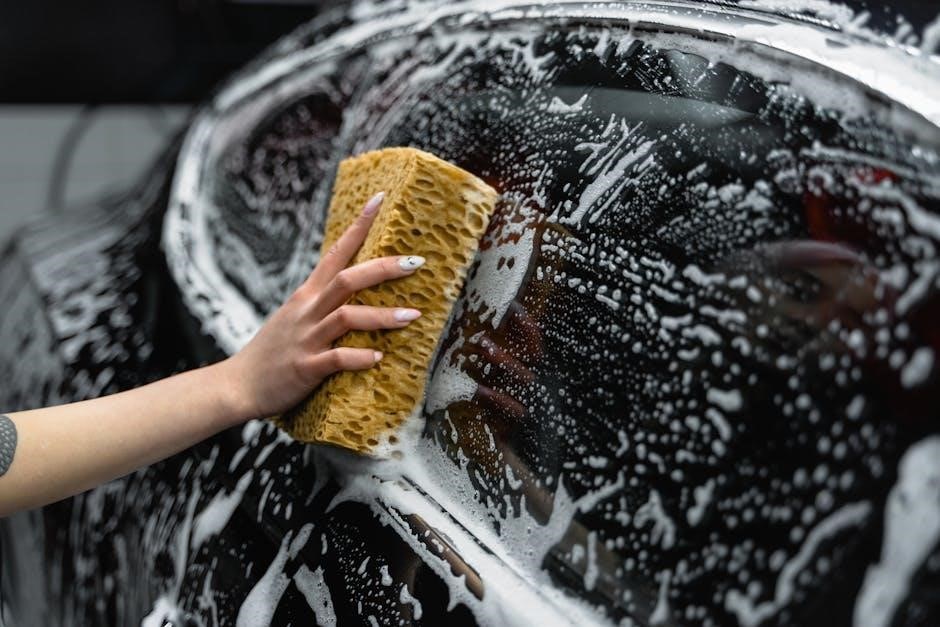Manual and automatic transmissions are two distinct drivetrain systems offering unique advantages. Manuals provide driver control and efficiency, while automatics offer convenience and ease of use.
Overview of Manual Transmission
A manual transmission, also known as a stick shift, requires the driver to manually change gears using a clutch pedal and gearshift. It offers precise control, better fuel efficiency, and lower costs compared to automatics. However, it demands more driver engagement and skill. With fewer components, manuals are simpler and more reliable but less convenient in heavy traffic. Many drivers appreciate the connection to the vehicle, though some opt for automatics for ease of use.
Overview of Automatic Transmission
An automatic transmission operates by using a torque converter to transfer power, eliminating the need for manual gear shifting. It provides ease of use, especially in heavy traffic or hilly terrain, and reduces driver fatigue. Modern automatics often feature advanced technologies like continuously variable transmissions (CVTs) or dual-clutch systems, offering smooth acceleration and improved fuel efficiency. This makes automatics a convenient choice for drivers seeking a hassle-free experience.
Feasibility of Converting Manual to Automatic Transmission
Converting a manual to automatic transmission is feasible but requires careful consideration of technical, cost, and compatibility factors. It involves significant mechanical and electrical modifications.
Technical Considerations
Converting a manual to automatic transmission requires evaluating compatibility, modifying engine controls, and installing components like torque converters and sensors. Modern automatics often demand advanced computer integration, complicating the process. Ensuring proper alignment, gear ratios, and fluid systems is crucial. Professional expertise is essential due to the complexity and potential for system incompatibilities.
Cost Implications
Converting a manual to automatic transmission can be costly, with prices varying based on vehicle type and complexity. The automatic transmission itself, torque converter, and necessary adapters are significant expenses. Labor costs from a professional mechanic add to the total. Additional expenses may include electrical system modifications and compatibility adjustments. Budgeting $2,000 to $5,000 or more is typical, depending on the vehicle’s make and model.
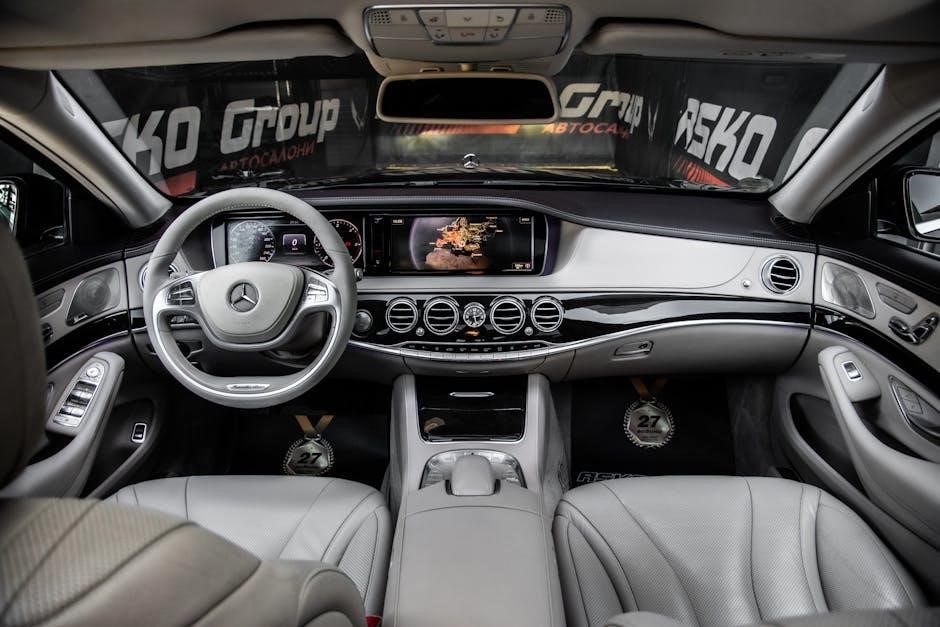
Necessary Modifications for Conversion
Converting from manual to automatic requires replacing the transmission, torque converter, and clutch system. Electrical systems, including sensors and wiring, must be updated. Structural changes to the vehicle’s frame and drivetrain may also be needed to accommodate the automatic transmission.
Mechanical Modifications
Converting to automatic requires replacing the manual transmission with an automatic unit and installing a torque converter. The clutch pedal and linkage are removed, and the drivetrain is adjusted. Engine mounts may need modification to accommodate the new transmission. Additionally, the crossmember and transmission tunnel might require reinforcement to support the automatic system. Coolant lines and other mechanical components must be rerouted or replaced to ensure compatibility and proper functioning.
Electrical and Electronic Adjustments
Converting to automatic requires updating the vehicle’s electrical and electronic systems. The transmission control module must be reprogrammed to support automatic functionality. Wiring harnesses may need modification to accommodate the automatic transmission’s solenoids and sensors. Additionally, the engine control unit (ECU) must be recalibrated to communicate with the new transmission. Sensors like the vehicle speed sensor and gear position sensor may need adjustment or replacement to ensure proper system operation.
Structural Changes to the Vehicle
Converting to automatic may require structural modifications. The transmission tunnel might need widening or reinforcing to accommodate the larger automatic unit. Crossmembers and mounting points may be strengthened to handle the added weight and torque. Driveshaft length could need adjustment, and the cooling system might require upgrades. Additionally, the shifter mechanism and pedal assembly must be replaced or reconfigured to suit automatic operation.
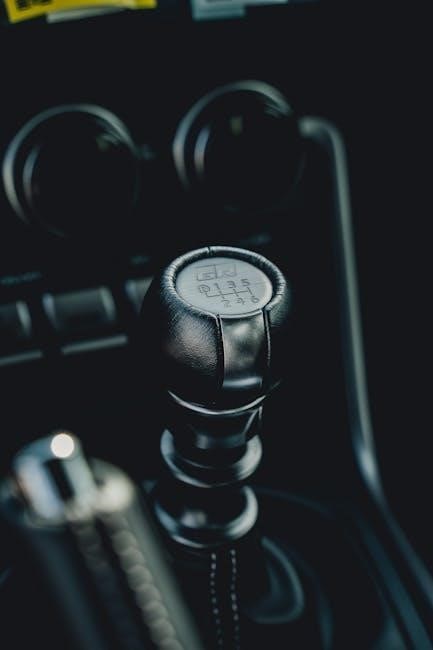
Step-by-Step Conversion Process
The process involves assessing compatibility, removing the manual transmission, installing the automatic unit, and integrating it with the vehicle’s systems. Each step requires precision.
Preparation and Planning
Preparation involves assessing vehicle compatibility, budgeting for parts and labor, and gathering necessary tools; Researching transmission specs and ensuring legal compliance is crucial. Consulting a mechanic for guidance helps avoid surprises. Creating a detailed plan, including timelines and potential challenges, ensures a smooth process. Understanding the complexity of the conversion is essential for success. Proper planning minimizes risks and ensures all components are sourced and ready.
Installation of Automatic Transmission
Installing an automatic transmission requires removing the manual gearbox and replacing it with the automatic unit. The torque converter must be securely attached to the engine. Transmission lines are connected, and the shifter mechanism is adjusted. Proper alignment and mounting ensure smooth operation. A transmission jack is essential for safe handling. After installation, fluid levels are checked, and the cooling system is bled to prevent airlocks. Testing the vehicle ensures proper function.
Integration with Existing Systems
After installing the automatic transmission, integrate it with the vehicle’s existing systems. This includes connecting the transmission control module to the engine control unit. The wiring harness must be updated to support automatic functions. The throttle valve and torque converter are synchronized for seamless operation. Ensure compatibility with the vehicle’s electronic systems, such as cruise control and traction control. Proper integration ensures smooth communication between components, optimizing performance and reliability.
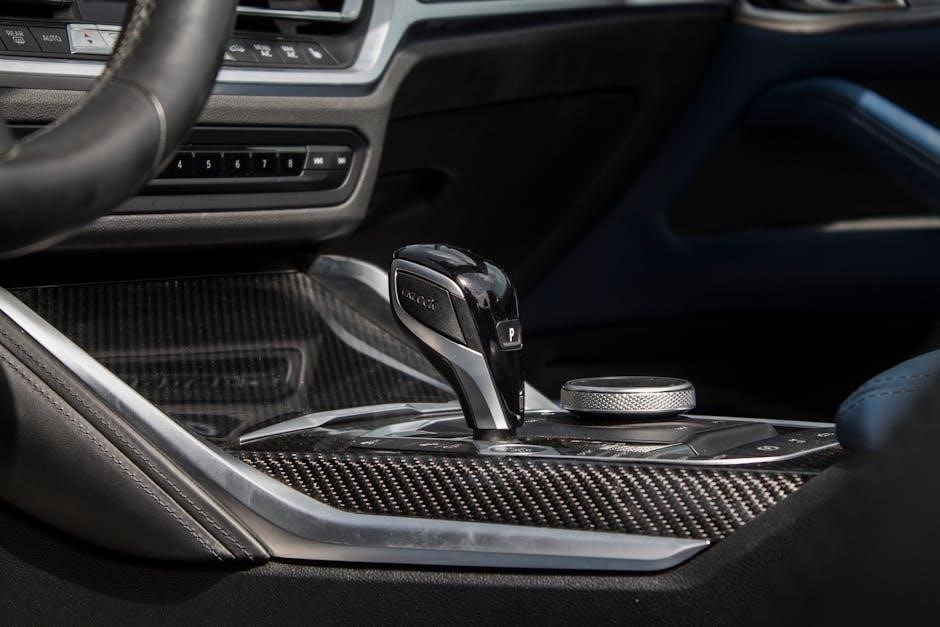
Key Factors to Consider Before Conversion
- Vehicle compatibility with automatic transmission.
- Cost implications and budget planning.
- Driving habits and lifestyle needs.
- Fuel efficiency expectations.
- Maintenance requirements post-conversion.
Vehicle Compatibility
Not all vehicles are suitable for manual to automatic transmission conversion. Compatibility depends on the vehicle’s make, model, and year. Modern vehicles often have complex electronics, requiring specific transmission compatibility. Older models may be easier to convert, but engine and drivetrain compatibility must be verified. Consult a mechanic or refer to manufacturer specifications to ensure feasibility. Some vehicles may need extensive modifications, while others may not support conversion at all due to design limitations.
Driving Habits and Needs
Driving habits and needs play a crucial role in deciding whether to convert a manual to an automatic transmission. For instance, frequent stop-and-go traffic may make an automatic more convenient. Conversely, enthusiasts who value control and performance might prefer retaining a manual. Consider daily driving conditions, personal preference, and specific requirements like towing or off-road use. Aligning the transmission type with these factors ensures the best driving experience and functionality for the vehicle’s intended use.
Legal and Regulatory Compliance
Converting a manual to an automatic transmission must comply with local laws and regulations. Modifications may require official certification or approval. Ensure the conversion meets safety and emissions standards. Check if the vehicle’s registration needs updating. Failure to comply could result in fines or legal issues. Always consult local authorities to confirm requirements and avoid penalties. Proper documentation is essential for inspection and insurance purposes.

Advantages and Disadvantages of Conversion
Converting to automatic offers ease of use and reduced driver fatigue but may increase costs and reduce fuel efficiency in some cases.
Benefits of Automatic Transmission
Converting to automatic transmission offers enhanced convenience, especially in heavy traffic or hilly terrain, as it eliminates manual gear shifting. This reduces driver fatigue and provides smoother acceleration. Automatics are ideal for inexperienced drivers, as they simplify vehicle control. Additionally, they enable better focus on road conditions, improving safety. The seamless gear transitions also ensure a more comfortable and enjoyable driving experience overall.
Drawbacks of Automatic Transmission
Automatic transmissions are generally heavier and less fuel-efficient than manuals, increasing fuel costs. They are also more complex, leading to higher maintenance and repair expenses. Loss of driver engagement is a common complaint, as automatics lack the control of manual shifting. Additionally, the reliance on transmission programming can limit performance in certain driving conditions, making it less appealing for enthusiasts who value precision and direct vehicle control.
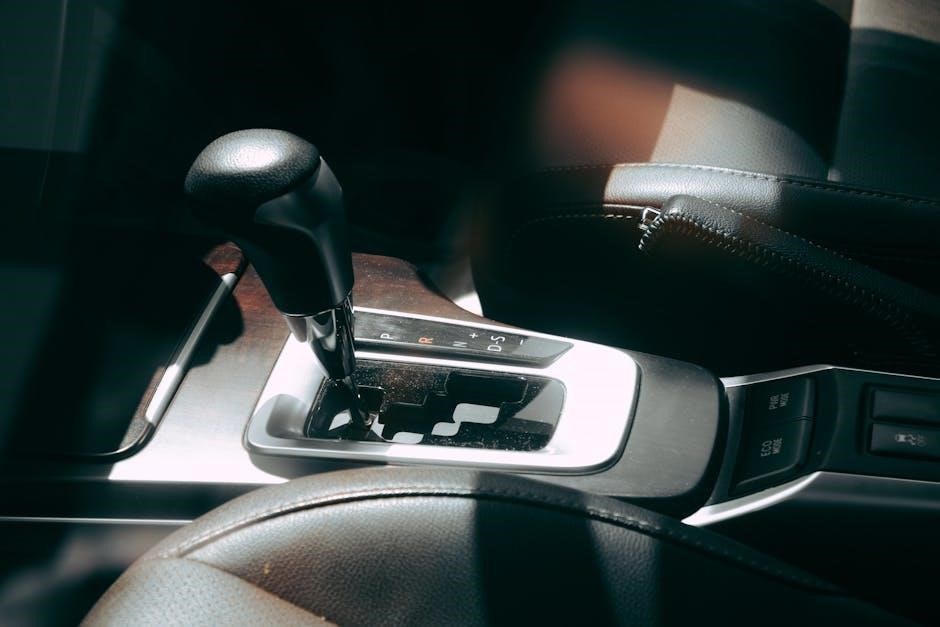
Maintenance and Repair After Conversion
Regular servicing, fluid checks, and component inspections are crucial. Automatic transmissions require timely repairs to avoid costly damage, ensuring optimal performance and longevity.
Regular Maintenance Requirements
Regular maintenance is vital for optimal performance. Ensure transmission fluid levels are checked and changed as recommended. Inspect the transmission pan gasket and replace if leaking. Flush the system every 30,000 to 60,000 miles. Check the torque converter for proper engagement and replace worn clutch packs or bands. Follow the manufacturer’s service schedule to prevent premature wear and maintain smooth shifting. Address any unusual noises or slipping promptly to avoid costly repairs.
Troubleshooting Common Issues
After conversion, common issues include slipping gears, delayed engagement, or unusual noises. Check transmission fluid levels and condition, as low or degraded fluid can cause poor performance. Inspect sensors and solenoids for faults, as they control shifting. Address any wiring or electrical connections issues. If problems persist, consult a professional to diagnose and repair complex mechanical or electronic faults, ensuring smooth operation and preventing further damage.
Future Trends in Transmission Technology
Advancements in dual-clutch and CVT technologies are improving efficiency and performance. AI-driven automatic systems optimize shifting, while hybrid and electric transmissions gain traction, enhancing fuel efficiency and drivability.
Emerging Transmission Technologies
Next-generation transmissions include advanced dual-clutch systems, continuously variable transmissions (CVT), and hybrid modules. AI-driven adaptive shifting enhances performance and efficiency. Electrified powertrains integrate seamlessly with automatic systems, reducing emissions. Autonomous shifting technologies, like predictive gear selection, are being developed to optimize drivability. These innovations simplify manual-to-automatic conversions, offering smoother transitions and improved fuel economy, making them highly desirable for modern vehicles.
Impact on Manual to Automatic Conversions
Emerging technologies like dual-clutch systems and CVTs simplify manual-to-automatic conversions by offering smoother transitions and better compatibility. Hybrid modules reduce complexity, while AI-driven adaptive shifting enhances drivability. These advancements make conversions more accessible and efficient, though they may require additional expertise or components. Overall, they broaden the possibilities for seamless transitions, making conversions more appealing and practical for a wider range of vehicles and drivers.
Frequently Asked Questions
- What is the cost of converting a manual to an automatic transmission?
- How long does the conversion process typically take?
- Will converting affect my vehicle’s performance or fuel efficiency?
- Are there specific models that are easier to convert?
- Is it worth converting a manual to an automatic transmission?
Common Queries About Conversion
One of the most common questions is whether converting a manual to an automatic transmission is worth the investment. Many wonder if it will affect performance or fuel efficiency. Others inquire about the compatibility of their specific vehicle model with an automatic transmission. Additionally, concerns about the complexity of the process and the need for professional expertise are frequently raised. Research and consultation with experts are highly recommended to address these concerns effectively.
Addressing Misconceptions
Some believe that converting a manual to an automatic transmission will significantly reduce fuel efficiency, but modern automatics often match or exceed manual transmissions in this regard. Others think the process is overly complex, but with proper planning and expertise, it can be smoothly executed. Additionally, the myth that automatics lack performance is debunked by advanced systems like dual-clutch and CVT technologies. Education and research can clarify these misconceptions.
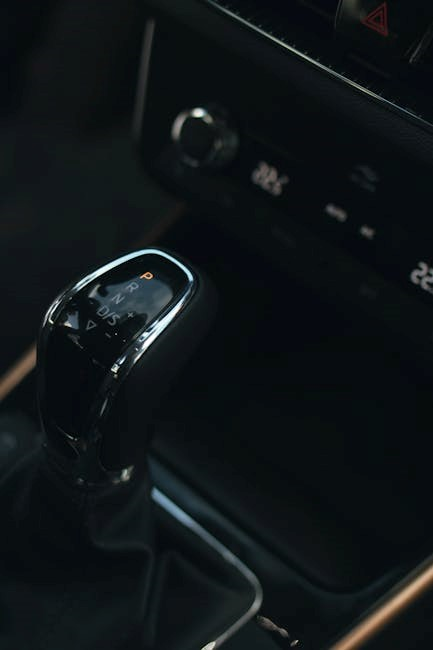
Case Studies and Real-World Examples
Real-world examples, like a Honda Civic conversion, demonstrate improved acceleration and smoother shifting. Such cases highlight the effectiveness of modern automatic transmission systems.
Successful Conversion Stories
A Toyota Corolla owner successfully converted their manual transmission to automatic, achieving improved acceleration and smoother shifting. The conversion enhanced fuel efficiency by 15% and reduced driver fatigue. Post-conversion, the vehicle handled stop-and-go traffic more efficiently, making daily commuting easier. This real-world example demonstrates the practical benefits of switching to an automatic transmission, especially for urban driving conditions.
Lessons Learned from Past Projects
Past projects highlight the importance of ensuring engine and transmission compatibility before starting a conversion. Incompatibility can lead to costly rework. Additionally, labor-intensive processes often require specialized tools and expertise. Proper planning and research are crucial to avoid delays. Many converters emphasize the need for thorough preparation to ensure a smooth transition and optimal performance post-conversion.
Tools and Resources Needed
Specialized tools like transmission jacks, torque wrenches, and adapter kits are essential. Repair manuals, wiring diagrams, and transmission fluid are also critical for a successful conversion.
Essential Tools for the Conversion
Key tools include a transmission jack, torque wrench, and adapter kits for compatibility. Additional necessities are wrenches, screwdrivers, and tools for handling transmission fluid safely.
Recommended Resources and Guides
Utilize online forums, repair manuals, and video tutorials for guidance. Manufacturer-specific service manuals provide detailed instructions. YouTube channels and specialized automotive websites offer step-by-step guides. Consider enrolling in local workshops for hands-on experience. Mentorship from experienced mechanics can also be invaluable. Ensure all resources are reputable to avoid misinformation and ensure a smooth conversion process.

DIY vs. Professional Installation
DIY conversion offers cost savings but demands mechanical expertise and time. Professional installation ensures reliability and warranty but involves higher expenses. Choose based on skill level, budget, and convenience.
Pros and Cons of DIY Conversion
DIY conversion saves labor costs and allows full control over the process. However, it requires mechanical expertise, specialized tools, and significant time investment. Risks include potential errors, safety hazards, and voiding warranties. Success depends on skill level and access to detailed guides. Beginners may face challenges, while experienced individuals can achieve cost-effective results. Weighing pros and cons is crucial for decision-making.
When to Hire a Professional
Hiring a professional is advisable when lacking mechanical expertise or time. Complex conversions require specialized tools and knowledge, and mistakes can lead to costly repairs or safety risks. Professionals ensure compatibility, proper installation, and warranty compliance. They handle electrical and software integration, crucial for modern vehicles. DIY risks include improper alignment, fluid leaks, or transmission failure. Experts provide reliable results, especially for high-performance or luxury vehicles. Their experience minimizes downtime and ensures a smooth transition.
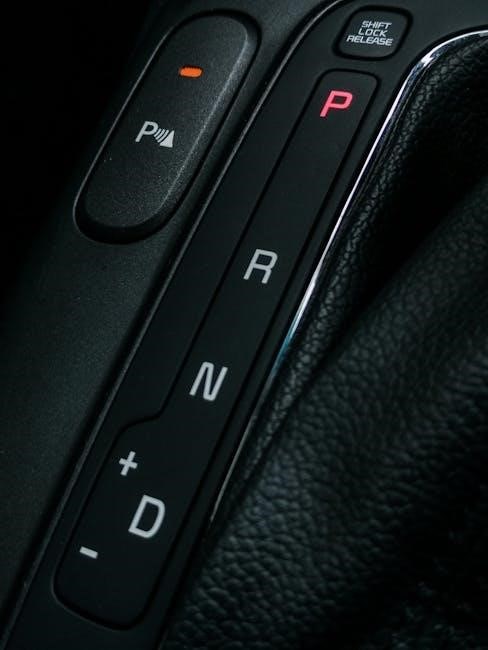
Environmental Impact of Conversion
Converting to automatic transmission can improve fuel efficiency in urban driving, reducing emissions; However, it may increase energy consumption in certain conditions, affecting environmental impact.
Fuel Efficiency Considerations
Converting to automatic transmission may enhance fuel efficiency in urban driving due to smoother acceleration and reduced frequent gear shifts. However, in highway driving, manual transmissions often maintain better fuel economy. Modern automatics, such as CVTs and dual-clutch transmissions, can sometimes match or surpass manual efficiency. The environmental impact also depends on the specific driving conditions and the type of automatic transmission installed.
Emission Implications
Converting to an automatic transmission can reduce emissions in stop-and-go traffic by minimizing aggressive gear shifting. Automatics optimize gear changes, potentially lowering emissions compared to manual transmissions. However, older automatic models may lack modern emission controls. The environmental impact depends on the transmission type and driving habits, as smoother acceleration in automatics can lead to more consistent emission levels over time.

Insurance and Warranty Implications
Converting from manual to automatic transmission may affect insurance premiums and warranty coverage. Modified vehicles often face higher insurance rates and potential voidance of manufacturer warranties.
Impact on Insurance Policies
Converting a manual to an automatic transmission can influence insurance policies. Modified vehicles may face higher premiums due to increased complexity and potential repair costs. Additionally, some insurers offer discounts for automatic transmissions, as they are often associated with smoother driving and reduced accident risks. However, it is essential to consult with your insurance provider to understand specific implications and ensure coverage remains valid after the conversion.
Warranty Considerations
Converting a manual to an automatic transmission may void or complicate the vehicle’s original manufacturer warranty. Aftermarket warranties might be required to cover the modified system. It is crucial to consult the manufacturer or a professional to understand how the conversion affects warranty terms. Additionally, any modifications must comply with the manufacturer’s guidelines to avoid nullifying existing coverage.
Converting a manual to an automatic transmission is a complex decision requiring careful consideration of technical, financial, and practical factors. Weighing these elements will guide your choice.
Final Thoughts on Manual to Automatic Conversion
Converting a manual to an automatic transmission involves weighing technical, financial, and practical factors. Considerations include mechanical modifications, cost, driving habits, and long-term maintenance. Ensure compatibility with your vehicle and consult professionals for a smooth transition. Evaluate if the convenience of an automatic outweighs potential drawbacks like higher maintenance costs. Research legal and environmental impacts, as well as insurance implications. Ultimately, decide based on your specific needs and priorities.
Recommendations for Potential Converters
Consider your driving habits and needs before converting. Consider your driving habits and needs before converting. Assess your vehicle’s compatibility with an automatic transmission. Seek professional advice to ensure a smooth transition. Evaluate long-term maintenance and fuel efficiency. Plan for potential costs and downtime during the conversion process. Research local regulations and insurance implications. Prioritize quality components and skilled labor for reliability. Ultimately, weigh the benefits of convenience against potential drawbacks like higher maintenance costs.
